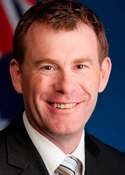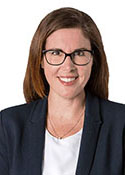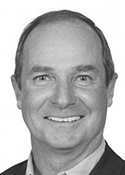Wakefield
Margin: Labor 3.4%
Region: Northern Adelaide, South Australia
In a nutshell: The Liberals did well to retain Wakefield when redistribution transformed it from rural to urban fringe in 2004, but the running has been with Labor ever since.
Candidates in ballot paper order

|
RICHARD INWOOD MARILYN PHILLIPS NICK CHAMPION KATHLEEN BOURNE CRAIG VANSTONE RALPH ANDERSON JOHN BOLTON |
Wakefield extends from outer northern Adelaide to rural territory as far as Clare 100 kilometres to the north, with overwhelming Labor strength around Elizabeth and Salisbury partly balanced by support for the Liberals in the Clare Valley. It has existed in name since South Australia was first divided into electorates in 1903, but its complexion changed dramatically when its southern neighbour Bonython as part of the cut in South Australia’s parliamentary numbers from twelve seats to eleven in 2004. Previously a conservative rural and outskirts seat encompassing the Murray Valley and Yorke Peninsula, it came to absorb the outer suburban industrial centre of Elizabeth while retaining the satellite town of Gawler, the Clare Valley wine-growing district, and the Gulf St Vincent coast from Two Wells north to Port Wakefield.
Prior to 2004, Wakefield was won by the major conservative party of the day at every election except 1938 and 1943, when it was won by Labor, and 1928, when it was won by the Country Party. The Liberal member from 1983 to 2004 was Neil Andrew, who spent the last six years of his parliamentary career serving as Speaker. Andrew at first considered challenging Patrick Secker for preselection in Barker after the 2004 redistribution turned Wakefield’s 14.7% margin into a notional Labor margin of 1.5%, but instead opted to retire. Wakefield was nonetheless retained for the Liberals at the ensuing election by David Fawcett, who picked up a 2.2% swing off a subdued Labor vote around Elizabeth to unseat Martyn Evans, who had held Bonython for Labor since 1994. Fawcett’s slender margin was demolished by a 7.3% swing in 2007, but he would return to parliament as a Senator after the 2010 election.
Wakefield has since been held for Labor by Nick Champion, a former state party president, Shop Distributive and Allied Employees Association official and staffer for state Industrial Relations Minister Michael Wright. The SDA link identifies him with the potentate of the South Australian Right, former Senator and current Senate candidate Don Farrell. He nonetheless went against Farrell by coming out in support of Kevin Rudd in the days before his unsuccessful February 2012 leadership challenge, resigning as caucus secretary to do so. As with Labor’s other South Australian newcomers from the 2007 election, Champion had no trouble retaining his seat at the 2010 election, a 5.4% swing boosting his margin to 12.0%. However, the seat has since returned to the marginal zone following a redistribution in which it traded an area around Salisbury for Lydoch and Williamstown east of Gawler, reducing the margin to 10.3%, and a 7.1% swing to the Liberals at the 2013 election, which has left it at 3.4%.
Champion’s opposition at the election includes Liberal candidate Kathleen Bourne, director of wine and spirits manufacturer Woodvale Vintners, and Nick Xenophon Team candidate Richard Inwood, manager of a Barossa Valley retail business.
Analysis by William Bowe. Read William’s blog, The Poll Bludger.


